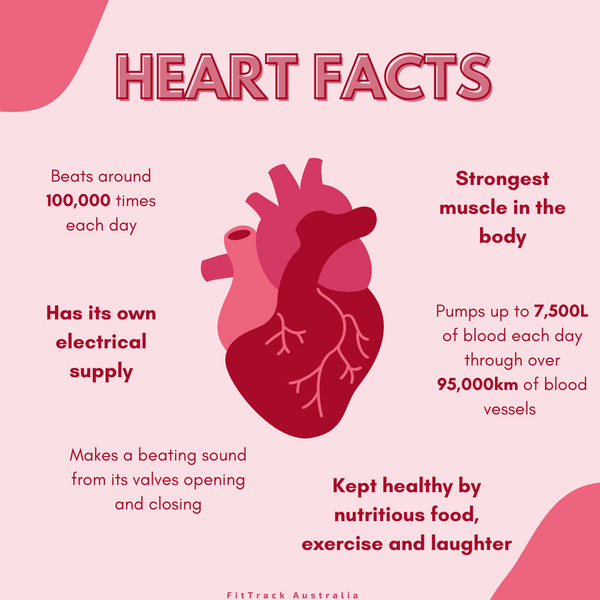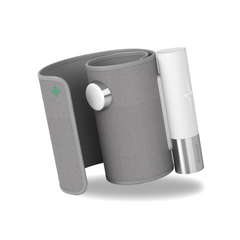What is the world's leading cause of death in 2022? Heart disease and stroke. Get behind this year’s World Heart Day on September 29 by checking the health of yours!
Yes - each year, 18.6 million people die from heart related diseases. The World Heart Federation created World Heart Day in 1999 with the goal to inform everyone about the reach of heart disease, and urge people to take care of their own heart health. By simply controlling risk factors, at least 80% of premature cardiovascular disease (CVD) and stroke deaths can be avoided! Therefore, education and exposure continues to be the WHF’s aim.
So, how’s your ticker “tocking''? Are there any lifestyle changes you can make to ensure your heart is at its best? What is cardiovascular disease (aka CVD)? If you are wondering about your heart’s health, keep reading to find out! Firstly, what is a “healthy heart?”

Signs Of a Healthy Heart
Living a heart-healthy lifestyle is one of the best things you can do for your future. Knowing what a healthy heart looks like can help you make decisions in care of it! The factors that contribute to good heart health are:
- Heart rate
- Breathing
- Energy levels
- Blood pressure
- Oral health
When these factors are within normal levels/kept healthy, your heart will thank you! And your whole body will reap the benefits. However, when there are issues in one or more of these areas, problems can develop - sometimes leading to cardiovascular disease (aka, CVD). So, what is CVD?

What Is Cardiovascular Disease (CVD)?
CVD is the term for a group of diseases that affect the heart or blood vessels. It can be broken down into:
- Heart Disease - The most common form of heart disease, caused by narrowed coronary arteries that supply blood to the heart muscle. Unfortunately, it can occur without noticeable symptoms until a heart attack.
- Heart Attack - Failing of the heart muscle due to an interruption of blood flow to the heart (usually by a blood clot). While not always fatal, a heart attack can cause lasting damage to the heart.
- Stroke - An interruption of blood supply to the brain, resulting in its loss of oxygen and nutrients. Strokes are caused by either a blood clot in the brain or bleeding in the brain.
As well as:
- Arrhythmia
- Aortic disease
- Cardiomyopathies
- Congenital heart disease
- Deep vein thrombosis and pulmonary embolism
- Heart failure
- Heart valve disease
- Pericardial disease
- Rheumatic heart disease
- Vascular disease
- Peripheral vascular disease
- Cerebrovascular disease
As stated at the outset, CVD has been and remains the world’s primary cause of death. At a 20.6% fatality rate, that’s a sobering statistic - even higher than that of cancer and COVID. CVD currently affects mostly low to middle income countries. So, what are its causes?
What Causes CVD?
Cardiovascular disease can be caused by a range of factors stemming from socio-economic, behavioural or environmental causes. These can also be pre existing conditions, and include:
- Bad diet choices
- Air pollution
- Diabetes
- High cholesterol
- Obesity
- Kidney disease
- Lack of physical activity
- Smoking
- Over drinking
- Stress
- Gender
- Ethnicity
- Family history
How is CVD diagnosed? In addition to assessing your symptoms, risk factors and medical history, a doctor may request a range of tests and imaging be done for a firm diagnosis. When necessary, these might include blood tests, x-rays, an electrocardiogram (ECG), CT scan or MRI. As well as keeping in touch with your doctor, it is also important to know the symptoms of CVD!

Symptoms of Cardiovascular Disease
Symptoms of CVD vary substantially and can go unnoticed until a major heart event occurs - such as heart attack or stroke. So, keeping an eye out for the following symptoms is important and worthy of a visit to your doctor!
CVD Symptoms:
- Chest pain, tightness, pressure or discomfort
- Pain, weakness or numbness in your legs or arms
- Pain in your arms, neck, shoulder, jaw or back
- Shortness of breath, or tiring quickly from activity
- Abnormal heart rhythms or palpitations
- Light-headedness or fainting
- Weakness or fatigue
- Swelling in your hands, legs, ankles or feet
- Skin rashes
- Dry or persistent cough
Interestingly - symptoms of a heart attack in men tend to be pain that’s more intense in the chest, left arm and jaw, accompanied by difficulty breathing. Heart attack symptoms in women may be similar but also tend to spread to the shoulders, neck, arms, abdomen and back. Symptoms of heart attack in women can be more inconsistent and dulled - sometimes mistaken for indigestion! They may experience little pain, but an increased amount of anxiety, fatigue, nausea, heart palpitations and cold sweats.
Although the above symptoms can be due to conditions other than CVD, they should never be taken lightly. So, if you experience one or more of the above symptoms of CVD - see your doctor. Cardiovascular disease can be treated easier when caught early. If you have chest pain paired with shortness of breath, seek medical help immediately.

How to Prevent CVD
The good news is, there are many ways to prevent and minimise the risk of cardiovascular disease. Many cases of CVD are linked to poor diet, physical inactivity, smoking and harmful use of alcohol. To significantly reduce your risk of getting it, it's important to keep all of these areas of your lifestyle in check. Eating healthy, exercising each week and keeping alcohol to a minimum will put you in line for a healthy heart for life! But, if you’re already living with CVD, staying healthy and active can help you live longer and reduce the chances of it getting worse. In addition, keeping an eye on your blood pressure, cholesterol levels and blood sugar levels will greatly help in managing and minimising the effects of CVD.
Look At Your Levels:
Blood Pressure - High blood pressure is a key player when it comes to heart attack and stroke precursors. If you are at risk of hypertension, make sure to get it checked by your doctor regularly and monitor it from home. For a list of blood pressure levels, as well as how to lower it, read the “Blood Pressure FAQ” on our blog here.
Cholesterol - High cholesterol is another common cause of CVD that can be controlled by healthy living and certain medications. According to Better Health Channel, cholesterol levels should be no higher than 5.5 mmol per litre if there are no other risk factors present. If there are other cardiovascular risk factors such as smoking and high blood pressure or pre-existing cardiovascular (heart) disease, then the aim for the LDL levels would be less than 2 mmol/l.
Blood Sugar - High blood sugar or diabetes also increases the risk of heart attacks and strokes. Normal blood sugar levels are between 4.0–7.8mmol/L, however this target varies depending if the person has type 1 or 2 diabetes, says Diabetes Australia.
Heart Health Technology - Blood Pressure Monitors, Blood Glucose Monitors, ECG Machines, Pulse Oximeters and More
To help you “know your numbers,” that is, easily monitor your heart from home, there are more heart health devices available than ever before. Things like; Blood Pressure Monitors, Blood Glucose Monitors, ECG capable devices, Pulse Oximeters, Body Compositions Scales and Smart Watches are equipped with technology to help you take different readings on your heart with ease. Using these devices, along with regular checkups from your doctor are great ways to see your heart’s stats (and know if action is required!)
|
|
Withings BPM Core - Wireless Blood Pressure Monitor with ECG + Digital StethoscopeDetect a variety of cardiovascular diseases with one device - the TGA approved BPM Core |
CVD and Covid-19 - Is There a Link?
Are people with cardiovascular disease more susceptible to severe COVID-19? Yes. And on the flip side, studies are showing that COVID patients who previously did not have any form of CVD are now six times more likely to develop it. For this year’s World Heart Day, the World Heart Federation is encouraging people to “Use Heart For Every Heart”. That is, to think differently and make the right decisions for the heart of yourself and others. So in line with this, they are recommending that people continue taking practical steps to keep themselves and others protected against COVID-19.
The Heart Of It All
Cardiovascular disease is the world's number one killer - but it doesn’t have to be! Simple, healthy lifestyle changes can be all your heart needs to thrive. Care for it like it means your life (it really does). Never turn a blind eye to any symptoms that could be stemming from your heart. Know what they are, and have your heart checked regularly by a doctor and monitor it from home. Get behind World Heart Day on September 29!
Resources:

